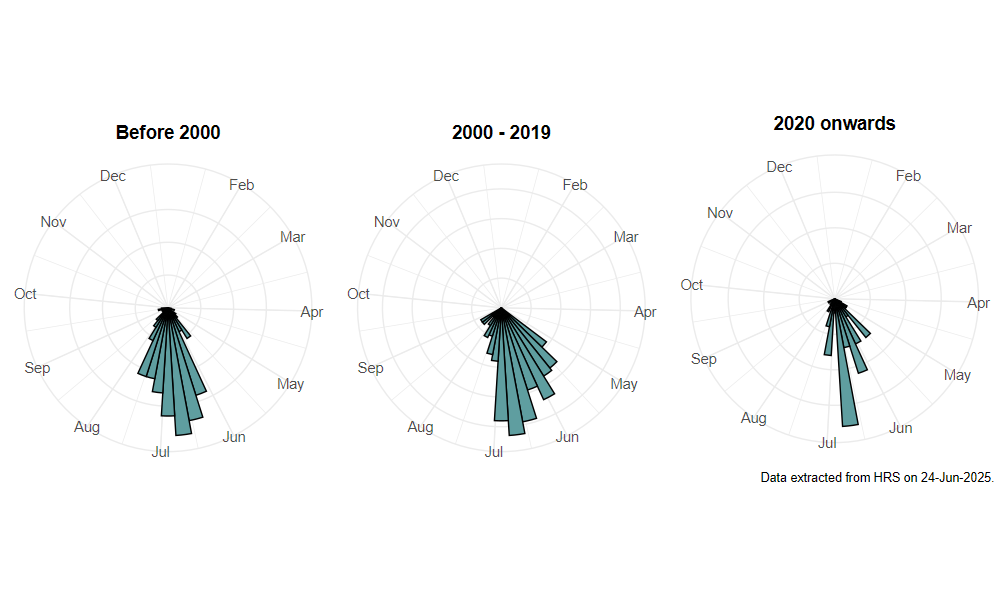Eumerus ornatus Meigen, 1822
Identification
Identification difficulty = 3. ![]()
![]() according to Ball & Morris, 20241
according to Ball & Morris, 20241
Biology
The larva is not described, but larvae of this genus usually live in plant bulbs or roots. Adults are normally found in deciduous woodland where they can be found resting on bare patches on paths and banks, flying low over, or sunning on, short vegetation. Males are distinctly territorial and defend sun-lit patches. They occasionally visit flowers such as Herb Robert Geranium robertianum.
Flight period
The following plots show the number of unique records per week excluding those reported to be of immature stages.

Status
Was listed as 'Notable' by Falk, 19912, but dropped from this status by Ball & Morris, 20143 who consider it LOWER RISK.
Distribution
A local species in well-wooded areas of southern Britain, with scattered records north to the Lake District. There are also a few scattered records in southern and central Scotland. Recent records suggest that this species is less scarce than was thought, and may often be overlooked because of its habit of staying close to the ground in dappled light in woodland.

Trends
The following plots show the Frescalo TFactor vs year and a map of the rescaled frequency (all records) for the species.
-
Ball, S., & Morris, R. (2024). Hoverflies of Britain and Ireland. WILDGuides (3rd ed.). Oxford: Princeton University Press. ↩
-
Falk, S. (1991). A review of the scarce and threatened flies of Great Britain. ( No. 39). Research and Survey in Nature Conservation (pp. 1–194). Peterborough: NCC. ↩
-
Ball, S., & Morris, R. (2014). A review of the scarce and threatened flies of Great Britain. Part 6: Syrphidae. ( No. 9). Species status (pp. 1–130). Peterborough: JNCC. ↩